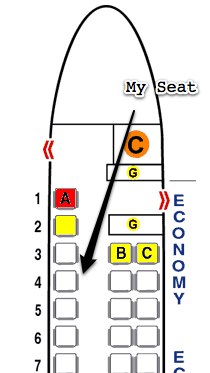 Yesterday was a long one, with a ten o’clock keynote and then two breakouts, a two-hour drive back to St. Louis, three hours of dealing with Lambert Airport, and a one-and-a-half hour flight home. But I woke up at home and that’s more than worth it.
Yesterday was a long one, with a ten o’clock keynote and then two breakouts, a two-hour drive back to St. Louis, three hours of dealing with Lambert Airport, and a one-and-a-half hour flight home. But I woke up at home and that’s more than worth it.
What woke me up this morning was thinking back to the EduBloggerCon at NECC and looking forward to Learning 2.008 in Shanghai — just over a month away. I enjoyed the NECC event. Even though there were many edubloggers who expressed some dissatisfaction with the event, I think that it was what it was intended to be — it was a bloggercon.
That said, it may not have been exactly what we needed at this point. At the EduBloggerCon in Atlanta, many of us were new to the practice, and just finding our voices in the education conversation. In San Antonio we were looking for the place for blogging in the classroom. Unfortunately, this conversation was destined to anchor on barriers — because it’s the barriers that so many of us are forced to deal with everyday. I don’t believe that educators from Scotland or even Canada, truly
appreciate the condition of education in the U.S. — especially as felt
by those of us who have known better times when motivating students
with creative and engaging learning experiences was part of our
language, not just political babel.
My good friend, Gwen Solomon, said something to me at the conference that I’ve heard spoken several times since. “Aren’t these the same conversations we’ve been having for years?”
We need something new or something more than a BloggerCon. Of course we can call it what ever we like, but we need opportunities to, in a sense, act out what we believe and to do it from the other side of the barriers. One of the EduBloggerCon critics, Ewan McIntosh, shared with me some brilliant ideas in the Bloggers Cafe the next day, many of them stemming from his experiences with TeachMeet.
I’m drawn back to something that I noticed and share through an unrelated blog entry a while back, about contests of skill that produce models. They were the game developing competition at the GLS Conference and the weekend Startups contest held here in Raleigh several weeks ago.
What we need are these kinds of creative educator-invented models, and the attendees of these EduBloggerCons are perhaps the best people to build and describe them. So what if part of these less formal events was for teams of educators to describe, in some way that draws on their inventiveness, a learning experiences (lesson) that teaches an assigned standard, utilizing technology, 21st century literacy, 21st century skills, constructivist pedagogy, blah blah blah. The presentations and recording of their lessons might help us all to better picture the target that is just on the other side of those barriers — and maybe those barriers may come to look less daunting than they do when they’re the focus.
2¢ Worth!

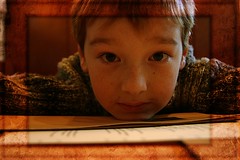 I have been taking a break from blog writing over the past week. I wish I could say that I’ve just been taking a break, but that is not the case. Yesterday, about 4:30 PM, I finished the final draft of a major project that I wish I could share with you. I’m actually much more excited, right now, to have it out the door than what it’s about. That will come. [Image ((Jason. ?Hei?e Schokolade ohne Sahne on Flickr – Photo Sharing!.? 25 Oct 2007. 28 Jul 2008 <http://flickr.com/photos/jasmic/1745660158/>.))]
I have been taking a break from blog writing over the past week. I wish I could say that I’ve just been taking a break, but that is not the case. Yesterday, about 4:30 PM, I finished the final draft of a major project that I wish I could share with you. I’m actually much more excited, right now, to have it out the door than what it’s about. That will come. [Image ((Jason. ?Hei?e Schokolade ohne Sahne on Flickr – Photo Sharing!.? 25 Oct 2007. 28 Jul 2008 <http://flickr.com/photos/jasmic/1745660158/>.))] The folks at
The folks at 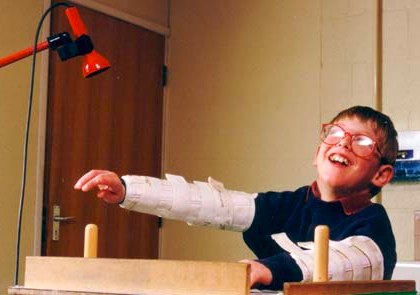 Still at the music conference. Jim Frankel is demo’ing and playing videos of a number of new music technologies. I’m loving it!
Still at the music conference. Jim Frankel is demo’ing and playing videos of a number of new music technologies. I’m loving it! I’m speaking at the Pennsylvania Music Educators’ Association annual conference today. Actually, I’m at the front table now, waiting for people to start filing in. The high point, though, will be
I’m speaking at the Pennsylvania Music Educators’ Association annual conference today. Actually, I’m at the front table now, waiting for people to start filing in. The high point, though, will be 
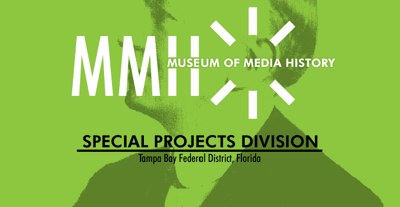
 One of the most intriguing presentations that I saw at the Games+Learning+Society Conference last week, was partly a replay from last year’s conference. It was delivered by Erica Halverson and Richard Halverson (don’t know their relation), and their delivery was fun. They’ve been researching fantasy sports, looking for the whys and ways that people learn while playing their teams against each other.
One of the most intriguing presentations that I saw at the Games+Learning+Society Conference last week, was partly a replay from last year’s conference. It was delivered by Erica Halverson and Richard Halverson (don’t know their relation), and their delivery was fun. They’ve been researching fantasy sports, looking for the whys and ways that people learn while playing their teams against each other. 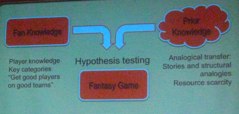
 There was a similar story in Sundays News & Observer, about a competition, here in Raleigh that challenged contestants to create a new business over the weekend. Some of the concepts were amazingly innovative. Halverson and Halverson seemed to be pointing to the competition as the motivation for learning, but I think that there is probably more to it than that.
There was a similar story in Sundays News & Observer, about a competition, here in Raleigh that challenged contestants to create a new business over the weekend. Some of the concepts were amazingly innovative. Halverson and Halverson seemed to be pointing to the competition as the motivation for learning, but I think that there is probably more to it than that. 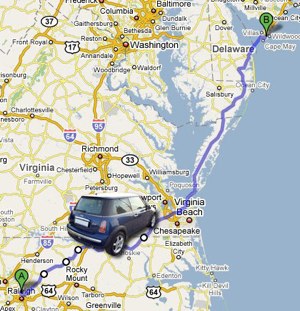 I am in that very sweet place between making it through a particularly onerous writing deadline and my next project, the New Jersey ELITE summer conference. The problem is that most everyone else, along my longitude of the planet is in deep Delta sleep. It’s OK, I’m looking forward to the day, with a canceled flight, I’m making my customary drive across Northeastern North Carolina on highway 258, then number 13 up through Portsmouth and Norfolk, across the Chesapeake Bay Bridge tunnel to the Delmar Peninsula, and on up the very rural and easy drive to Lewes, Delaware. There I drive onto the Cape May Ferry, for an 80 minute cruise to the southern tip of New Jersey. Then it’s just a few minutes to Wildwood, where I’ll be participating in a conference for NJ school administrators.
I am in that very sweet place between making it through a particularly onerous writing deadline and my next project, the New Jersey ELITE summer conference. The problem is that most everyone else, along my longitude of the planet is in deep Delta sleep. It’s OK, I’m looking forward to the day, with a canceled flight, I’m making my customary drive across Northeastern North Carolina on highway 258, then number 13 up through Portsmouth and Norfolk, across the Chesapeake Bay Bridge tunnel to the Delmar Peninsula, and on up the very rural and easy drive to Lewes, Delaware. There I drive onto the Cape May Ferry, for an 80 minute cruise to the southern tip of New Jersey. Then it’s just a few minutes to Wildwood, where I’ll be participating in a conference for NJ school administrators.